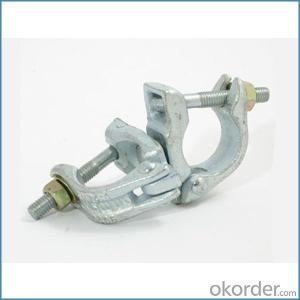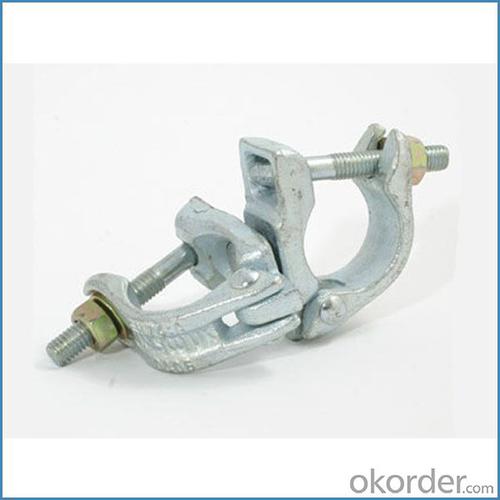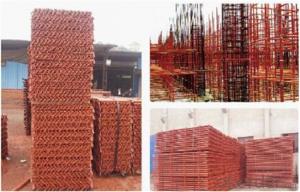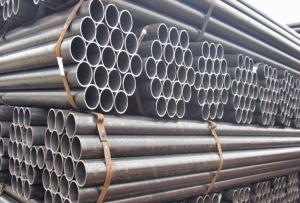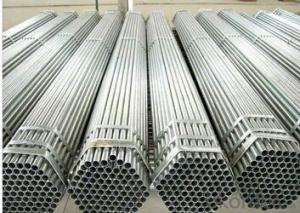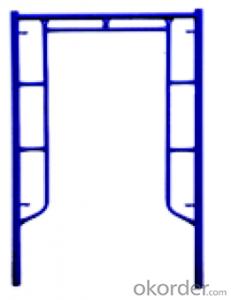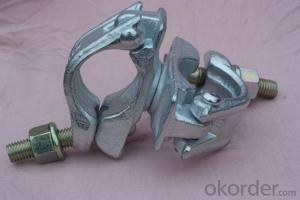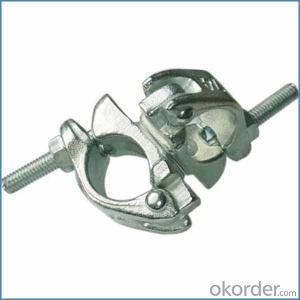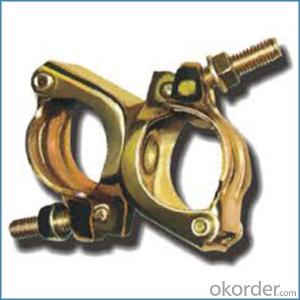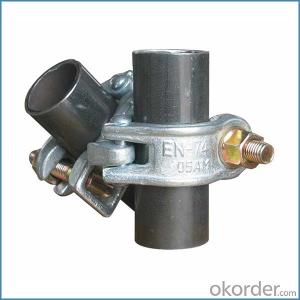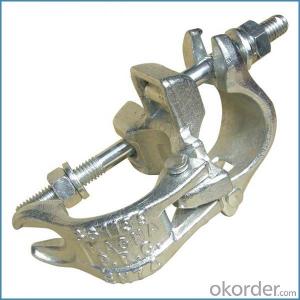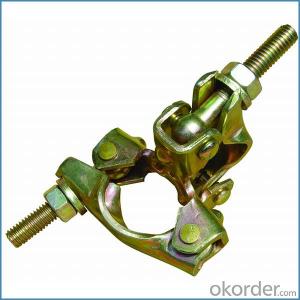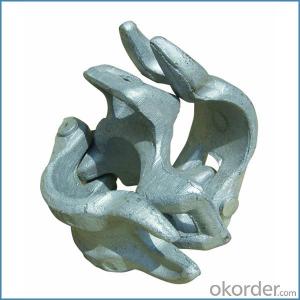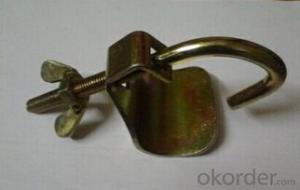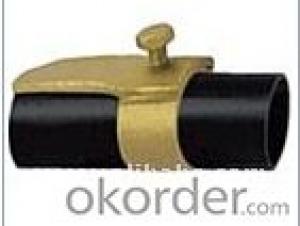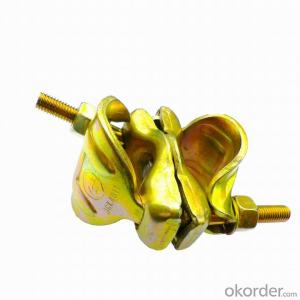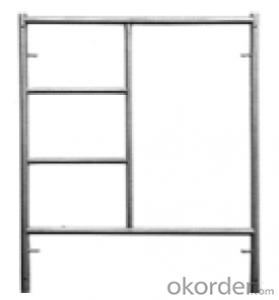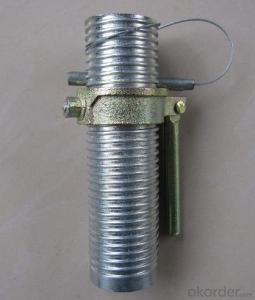Construction Scaffold Couplers British Type for Sale
- Loading Port:
- Tianjin
- Payment Terms:
- TT OR LC
- Min Order Qty:
- 1000 kg
- Supply Capability:
- 100000 kg/month
OKorder Service Pledge
OKorder Financial Service
You Might Also Like
Construction Scaffold Couplers British Type for Sale
Description
1.The scaffolding coupler is always used to connect the steel pipe as scaffolding system.
2.The often used coupler is swivel coupler and righ angle coupler .
3.We can provide types of scaffolding coupler according to your requirement.
4.Couoler can fix the 48.3mm scaffolding steel pipe tightly and make the whole scaffolding system more steadily.
5.Material:Q235 steel
6.Overall Size:48.3mm*48.3mm
7.Surface Finish: Galvanized/ Painted
8.Standard:BS1139,EN74
9.Package:25pcs/bag
10.Manufactuering as per customer requirements
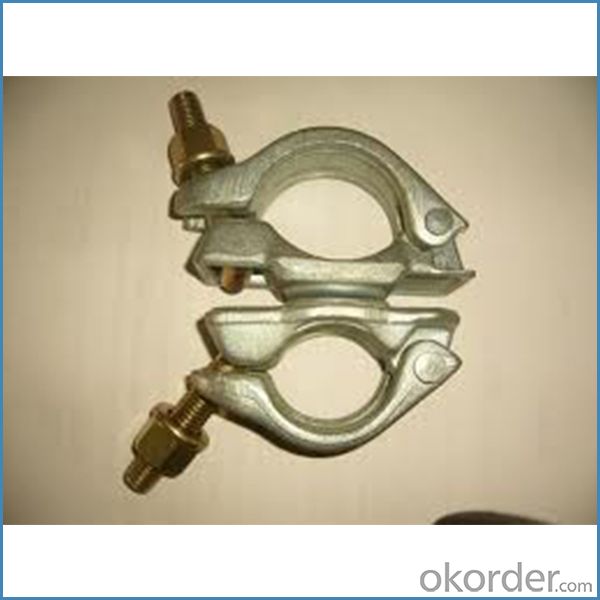
Feature
(1)Excellent Anti-Breaking—Cold Pressed Steel
(2)Outstanding Resistance Deformation
(3)Strong Anti-Dropping Ability
(4)Longtime USe
(5)Qualtity Guaranteed
(6)OEM Service
Photo
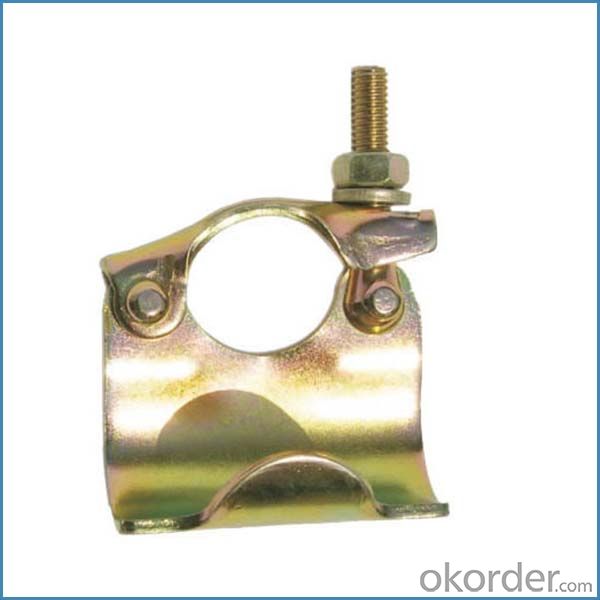
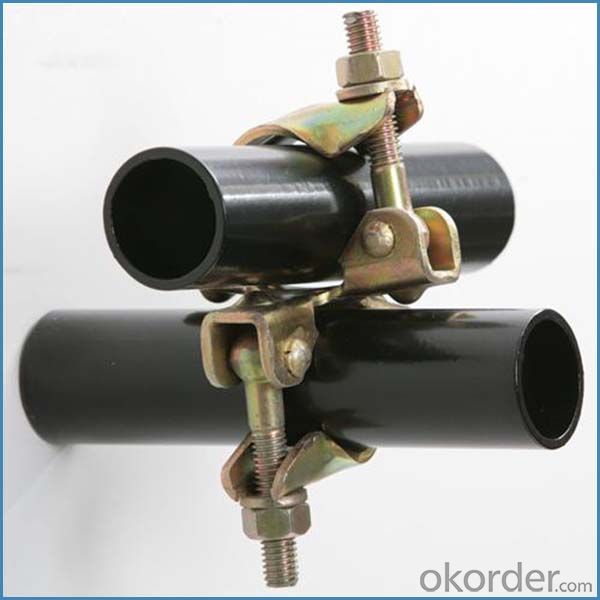
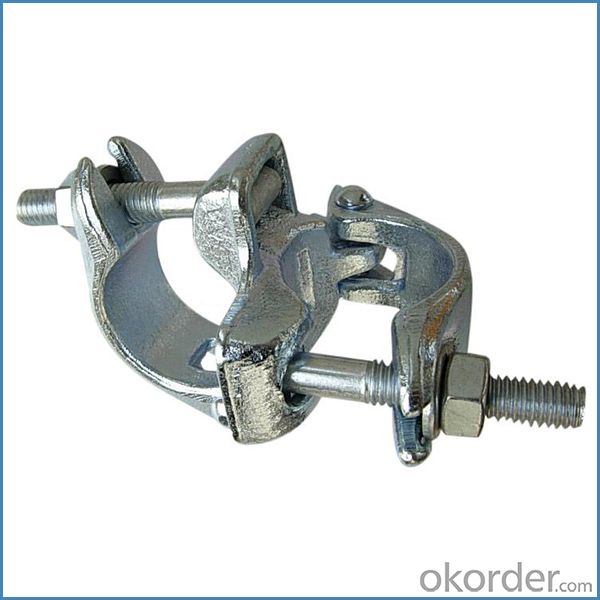
Parameter
| Material | Q235,345steel |
| Size | 48.3mm*48.3mm |
| Surface finish | Galvanized |
| Weight | 1.1kg around |
| Standard | BS1139,EN74 |
| Package | 25pcs/bag,steel pallet |
| Manufacture | As per customer requirement |
| Market | Africa, South America, the Middle East and Asia |
FAQ
Q: Are you a factory or trading company?
We are a state-owned corporation in China,dealing with various kinds of building materials.We have our holding subsidiaries.
Q: Where is your factory located? How can I visit there?
Our factory is located all around China.
Q: Can I get some samples?
Sample is free, customer only pay freight for the first time.
Q: Delivery?
10-30days. (5-15 containers)
Any question,feel free to contact us.
- Q: Eventually she began to scaffold her days.
- Only happens if you climb one. In the classroom, if you're 'hanging' around, you are studying the excellent examples of your brightest classmates.
- Q: What is the lifespan of steel tube couplers in scaffolding?
- The lifespan of steel tube couplers in scaffolding can vary depending on various factors such as the quality of the couplers, frequency of use, maintenance practices, and environmental conditions. However, with proper care and regular inspections, steel tube couplers in scaffolding can generally last for many years, providing reliable and safe connections for scaffolding structures.
- Q: Are there any specific standards or regulations for steel tube couplers used in scaffolding?
- Scaffolding couplers used in steel tubes are subject to specific standards and regulations in different countries. These regulations are enforced to guarantee the safety and integrity of scaffolding structures. In countries such as the United States, United Kingdom, and Australia, these standards are strictly followed. One widely recognized standard for scaffolding couplers is the EN 74 standard, which is used in Europe and other parts of the world. This standard provides detailed specifications and requirements for couplers, including their dimensions, materials, and mechanical properties. It also includes testing methods to ensure compliance with safety standards. In the United States, the Occupational Safety and Health Administration (OSHA) regulates scaffolding safety, including the use of couplers. OSHA standards require couplers to meet specific requirements for strength, durability, and load capacity. These standards also outline proper installation and use to ensure worker safety. Similarly, the United Kingdom has regulations and guidance provided by the Health and Safety Executive (HSE). The NASC (National Access and Scaffolding Confederation) also offers industry-specific guidance and recommendations for scaffolding couplers. These guidelines specify minimum requirements for materials, dimensions, and load capacity, as well as proper installation and inspection procedures. It is crucial for scaffolding companies and workers to comply with these standards and regulations to ensure the safety of the scaffolding structure and the individuals working on or around it. Regular inspection and maintenance of couplers are also essential to identify any potential issues or defects that may compromise their performance. Overall, the use of steel tube couplers in scaffolding is subject to specific standards and regulations in different countries, all aimed at maintaining a safe working environment in the construction industry.
- Q: I've been considering getting a scaffold piercing, but I wanted to know if the holes will heal up if I take it out when im older, any help is much appreciated!
- i have scaffolding, and its the same as a normal piercing - it all depends on you. my friends has never healed, but my other friends did. but i really recommend having it done, even though it hurts like hell :)
- Q: Are steel tube couplers reusable or disposable?
- Steel tube couplers are typically reusable.
- Q: Can steel tube couplers be used for scaffolding projects with unique architectural requirements?
- Yes, steel tube couplers can be used for scaffolding projects with unique architectural requirements. Steel tube couplers offer flexibility and versatility in scaffolding construction, allowing for customized configurations and structures to meet unique architectural specifications. Additionally, steel tube couplers provide strong and secure connections, ensuring safety and stability in scaffolding systems.
- Q: How do steel tube couplers contribute to the stability of scaffolding towers?
- Steel tube couplers contribute to the stability of scaffolding towers by securely connecting the steel tubes together, forming a rigid and stable structure. These couplers are designed to provide strong and reliable connections, ensuring that the scaffolding remains stable and safe during construction work.
- Q: Are steel tube couplers compatible with scaffolding systems from different manufacturers?
- Steel tube couplers are typically designed to be compatible with most scaffolding systems from different manufacturers. This is because steel tube couplers follow standard dimensions and specifications set by industry organizations such as the National Access and Scaffolding Confederation (NASC) and the Occupational Safety and Health Administration (OSHA). These standards ensure that steel tube couplers can be used interchangeably with scaffolding systems from different manufacturers, as long as they meet the same industry standards. However, it is always recommended to consult the specific manufacturer's guidelines and specifications to ensure proper compatibility and safety.
- Q: Are steel tube couplers compatible with scaffolding projects involving temporary bridges or walkways?
- Indeed, scaffolding projects encompassing temporary bridges or walkways can utilize steel tube couplers with ease. These couplers are widely employed within scaffolding systems to establish a secure and stable structure by connecting steel tubes. Their purpose is to deliver a robust and dependable connection, rendering them suitable for a multitude of applications, including temporary bridges and walkways. These couplers can be effortlessly attached and detached, granting flexibility and adaptability in scaffolding projects. Moreover, steel tube couplers boast durability and the ability to withstand hefty loads, guaranteeing the safety and stability of the temporary bridges or walkways. Consequently, the utilization of steel tube couplers in scaffolding projects involving temporary bridges or walkways is a prevalent and efficient practice.
- Q: How does a steel tube coupler work?
- A steel tube coupler is a device used to join two steel tubes together. It works by providing a secure and reliable connection between the tubes, allowing them to function as one continuous piece. The coupler is typically made of high-quality steel and is designed to withstand significant loads and forces. The working principle of a steel tube coupler involves three main components: the coupler itself, the steel tubes to be joined, and the installation process. The coupler is designed with internal threads that match the external threads on the ends of the steel tubes. These threads allow the coupler to be screwed onto the tubes, creating a tight and secure connection. To use a steel tube coupler, the ends of the tubes are first prepared by cutting them cleanly and squaring them off. The coupler is then screwed onto one of the tube ends until it reaches a predetermined depth. The second tube is then inserted into the other end of the coupler and also screwed in until it reaches the specified depth. This process ensures that both tubes are tightly connected to the coupler. Once the steel tubes are joined, the coupler provides several key functions. Firstly, it ensures the structural integrity of the connection, allowing the two tubes to act as one continuous piece. This is crucial in applications where the joined tubes need to withstand heavy loads or forces, such as in construction or engineering projects. Additionally, the steel tube coupler maintains the alignment and integrity of the tubes, preventing any movement or rotation between them. This is important for ensuring the overall stability and durability of the joined structure. The coupler also provides a watertight seal, preventing the ingress of moisture or other contaminants that could compromise the strength and longevity of the connection. In summary, a steel tube coupler is a device that allows two steel tubes to be securely joined together. It relies on threaded connections and a tight installation process to create a strong and reliable connection. This coupler plays a critical role in maintaining the structural integrity, alignment, and stability of the joined tubes, making it an essential component in various industries and applications.
Send your message to us
Construction Scaffold Couplers British Type for Sale
- Loading Port:
- Tianjin
- Payment Terms:
- TT OR LC
- Min Order Qty:
- 1000 kg
- Supply Capability:
- 100000 kg/month
OKorder Service Pledge
OKorder Financial Service
Similar products
Hot products
Hot Searches
Related keywords
